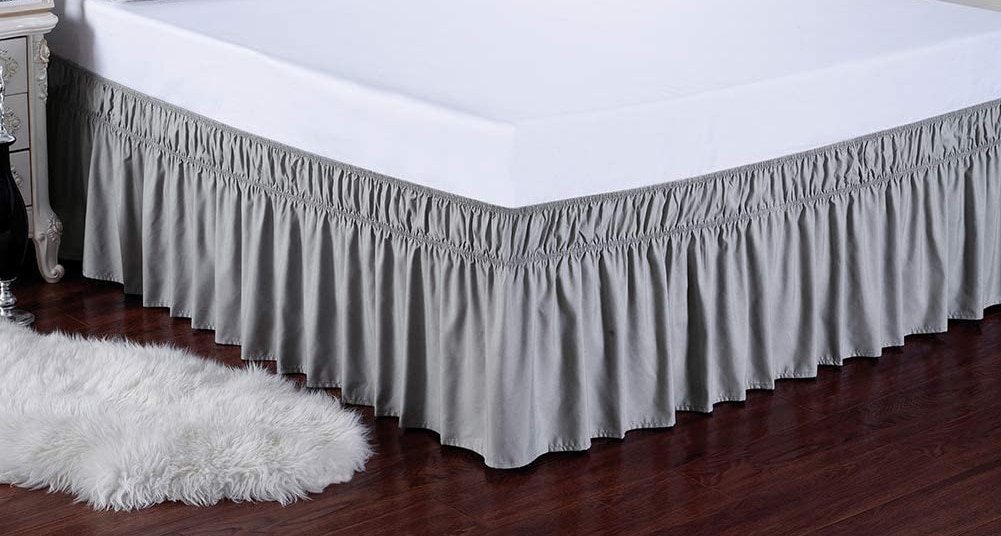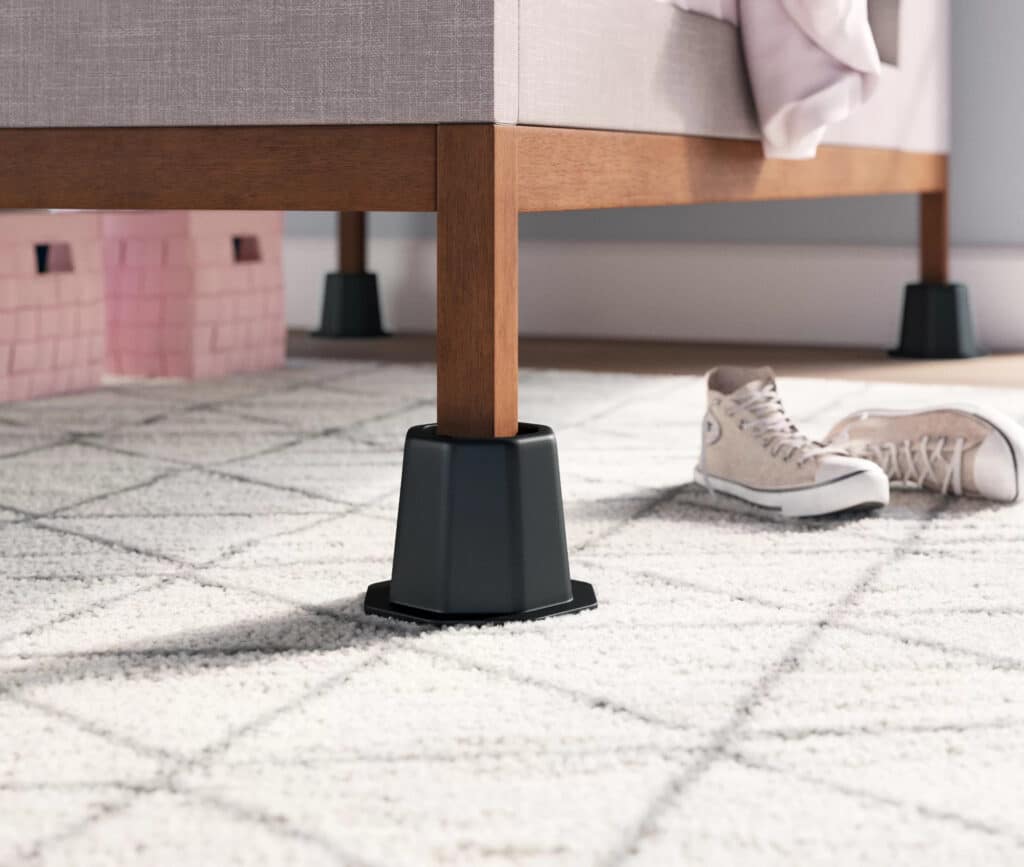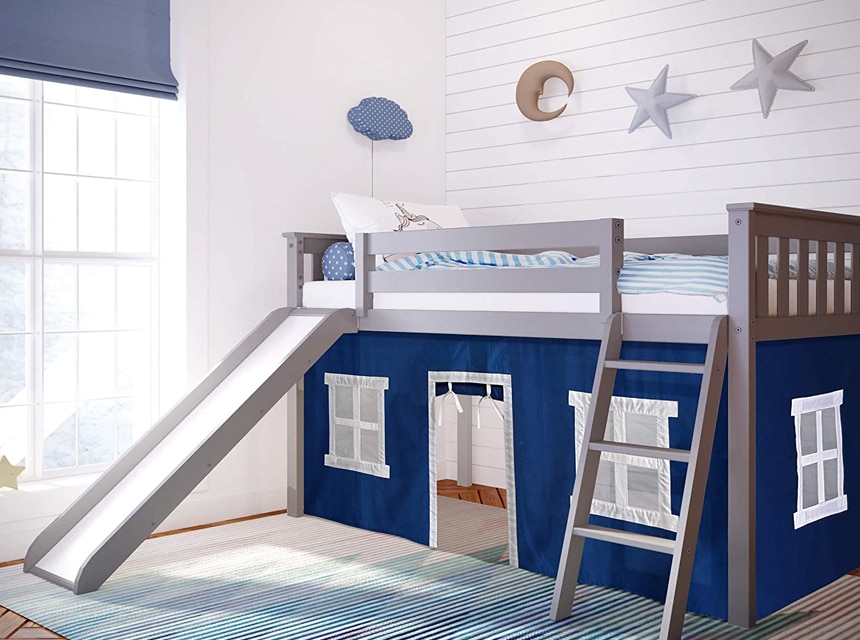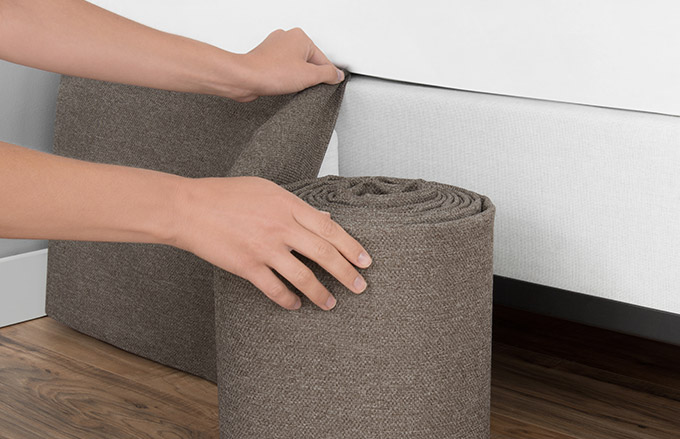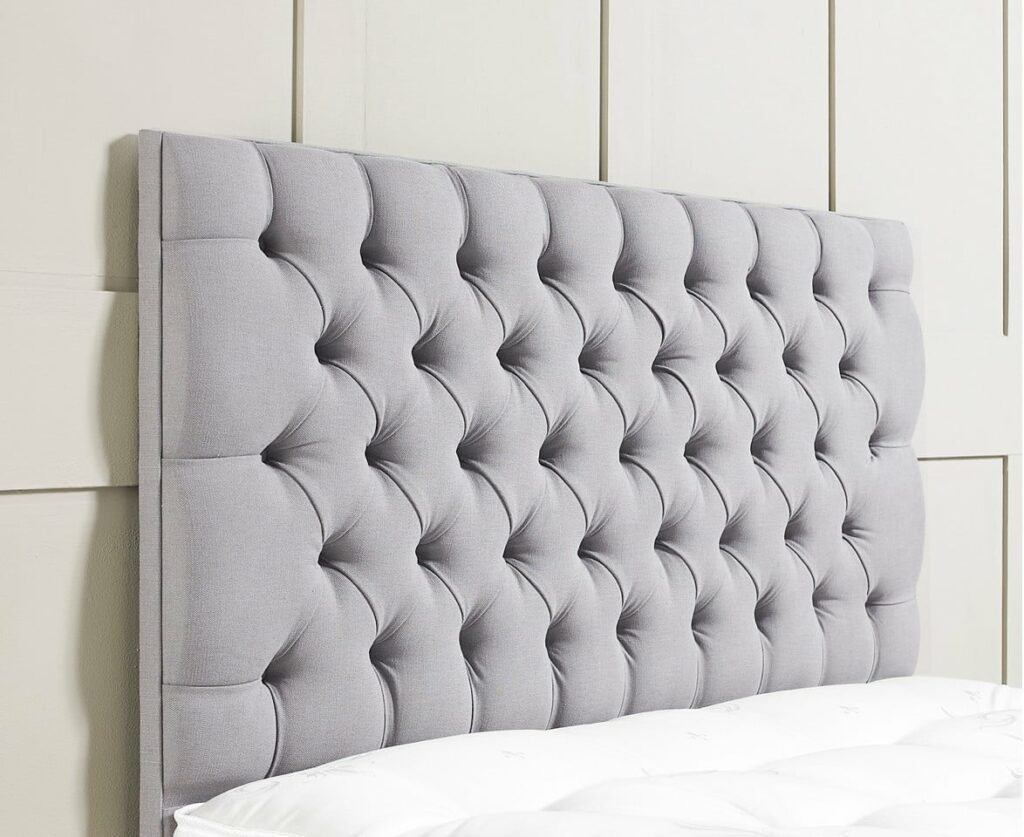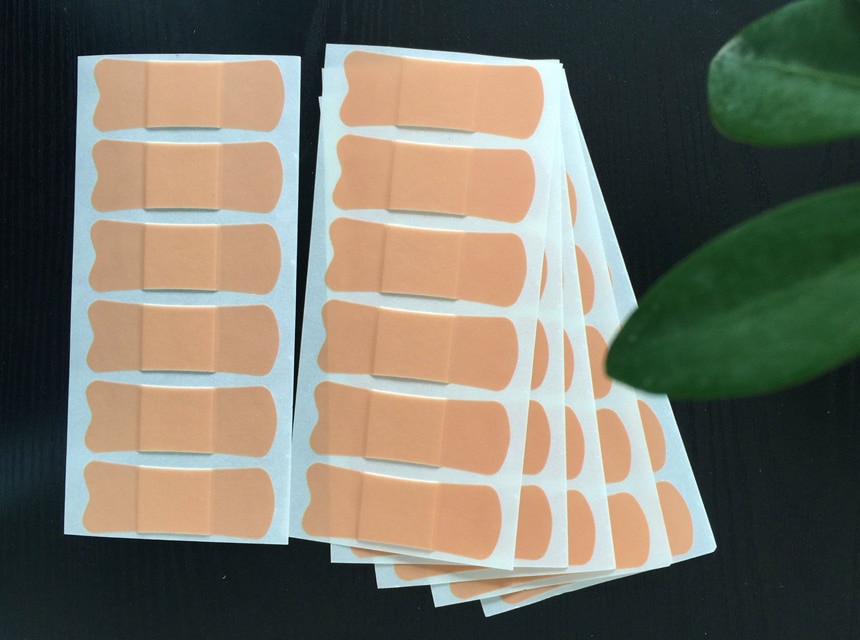

The right nightstand height for your bedroom is going to depend a lot on what type of nightstand you are looking for: a bedside table, bedside cabinet, or bedside chest. There are no actual nightstand height rules for how tall a nightstand should be, as this largely has to do with the height of your bed, what looks good to your eye, or your decorating scheme. For instance, the height of the bedside table for a mid-century style bedroom might be 26 inches, whereas the average height of a nightstand for other decors ranges between 27 and 32 inches. However, the standard nightstand height was around 27 inches for many years, a measurement that accommodates beds with box springs about 4 inches off the floor and then topped by a mattress. If you have an adjustable bed that raises, you might consider buying an adjustable height nightstand that can be upped to 50 inches.
There are dozens of nightstand styles, but in terms of basic structure, dimensions, and functionality, there are only three types: bedside table, cabinet, and chest.
Bedside tables usually have one to two drawers and even no drawer at all, but the main focus of this piece of furniture is the tabletop and the top. Some styles have a small open shelf instead of a drawer beneath the tabletop. They suit minimalist styles and are quite traditional. These types of nightstands can also incorporate features to help incorporate outlets, charging pads, and USB ports. Bedside tables, in particular, the adjustable bedside tables that lower and raise go best with newer minimalist adjustable bed frames, such as the smart bedframes sold by NOLAH. Minimalism is sought after right now because they go so well with popular mid-century and 1970s styles.
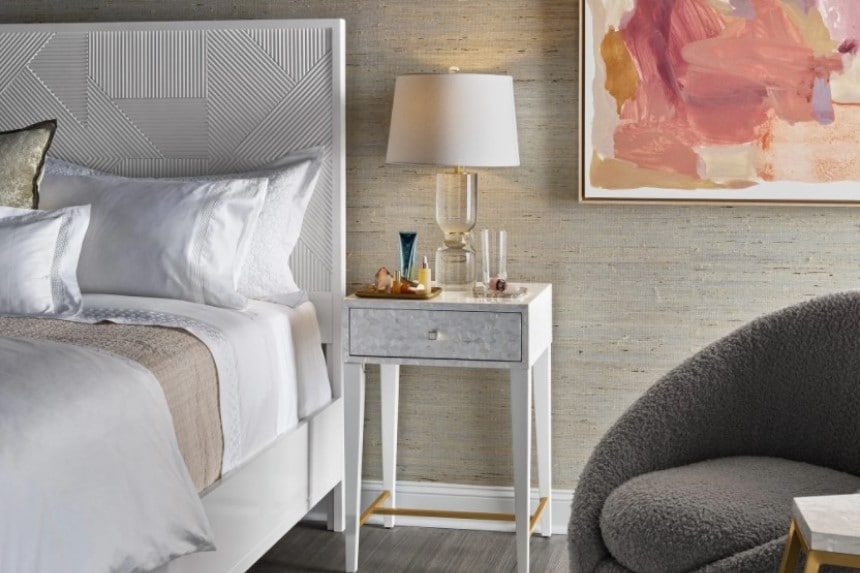
Bedside cabinets ten to have a top, one or two drawers, and a swinging cabinet door. They are useful for stowing away a stack of books, a heater, or larger objects that might be in your bedroom. Some bedside cabinets can reach from floor to ceiling and bookend either side of your bed, with cupboards on the top half of the unit and shelves and drawers on the lower part. Typically, one drawer and a cabinet with a swinging door support a proper nightstand height of about 29 to 30 inches.
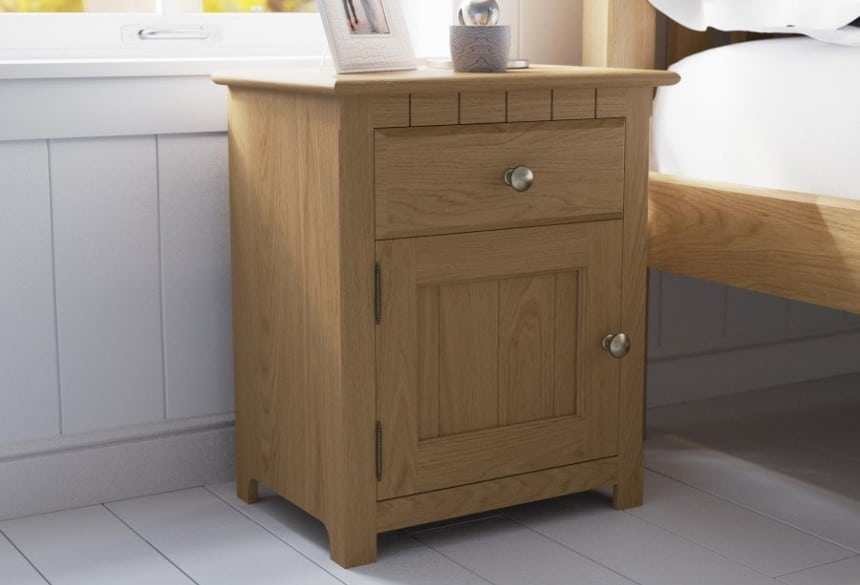
Bedside chests offer practical style as they usually have two to three drawers, which keeps your bedroom tidy. The top of a bedside chest should be level 1-inch higher than the mattress, which of course, could be anything from 26 inches or even lower if your bed is a futon on a platform Trusted Source The Absolute Best Bed: A Japanese Futon | Wirecutter Japanese futons are quilted sleeping pads stuffed with cotton or fiberfill, which can sit directly on the floor. www.nytimes.com .
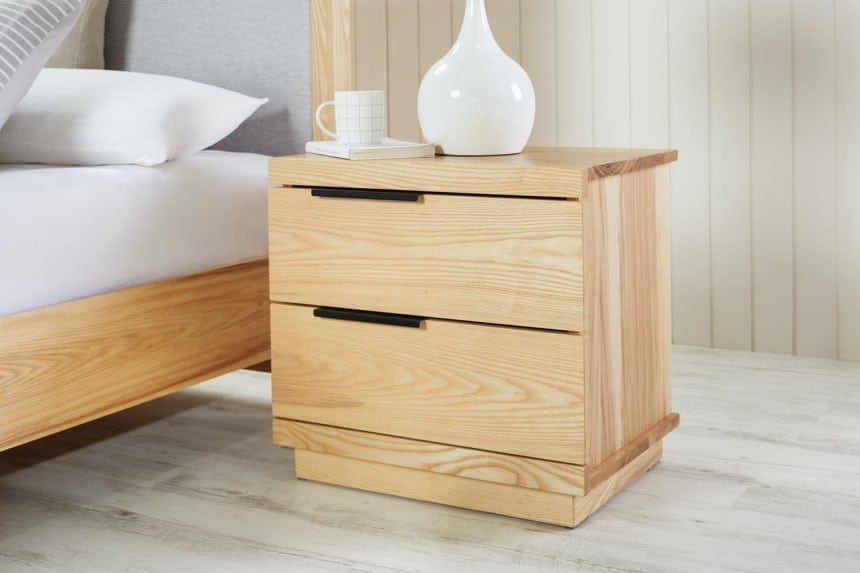
Before purchasing a proper nightstand, consider the material it is made of, how much storage space it contains, the surface area of the top of the unit, and its height and depth.
Like most furniture, nightstands are made of all kinds of materials. Some seem to exist solely as objects of art with small round surfaces that seem to be fitted to holding just a lamp and a cell phone charger. Chest and cabinet style is generally made of wood, plastic composites or acrylic, and is much more practical, with a full set of drawers and cupboards. You can also buy nightstands made completely out of mirrors or ones made of metal that adjust automatically to the height of your bed.
The amount of storage space that a nightstand offer has a lot to do with its style. Some styles, like Art Deco, Mission, and pedestal, are like little bistro tables, square or round with a mirrored or glass top and an elaborate base. They offer no storage space and only have room for a phone and a lamp, with the main design feature being an elaborate sculptural base. The less storage space the unit has, the more likely it is to be more of a decorative piece.
Tiered styles also offer you lots of storage space with separate shelves to help you store all of your nighttime things. This type of nightstand is usually open on all sides and boasts interlocking levels of the surface. Open stacked cubes made of acrylic or composite plastic are a popular modern bedstand style with “open storage.”
Many attractive chest styles are offered in all materials, including metal, mirrors and wood, paneled woods, wood composites, and veneers. Cabinet styles are similar, with drawers and swinging cupboard doors for stashing items.
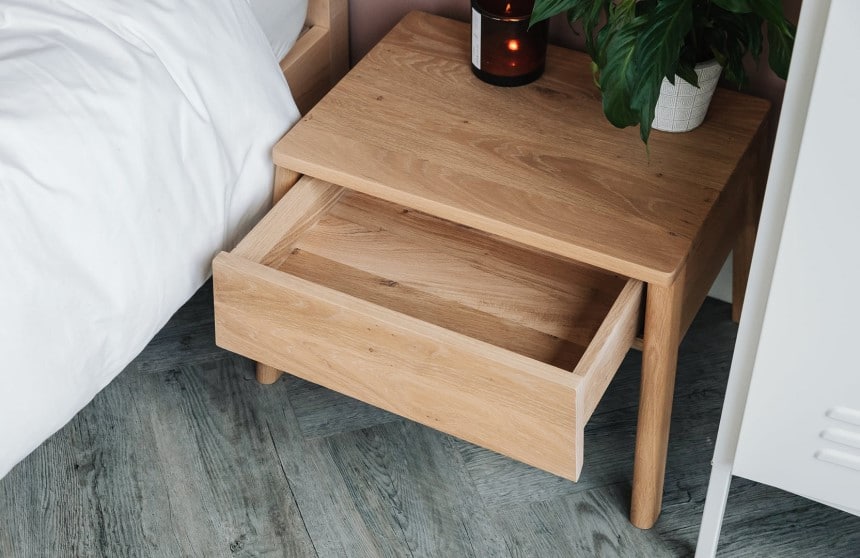
Most commercially available nightstands have a surface area between 20 to 40 inches wide depending on their size, the room in your bedroom for the nightstands, and whether or not you like to store a lot of objects on top of the table. For instance, someone with a CPAP machine or an aromatherapy unit is likely to need a larger surface area than someone who just needs space for a bottle of water and a cell phone. There are no rules for the width or depth of these tables. But they must be designed in a way that allows you to get in and out of bed easily, without bumping into it.
Ideally, the nightstand is supposed to be level with the bed or just slightly taller, but no more than an inch or two. Remember, this is supposed to be a practical item meant to spare you from straining or reaching for essential items in the middle of the night. The easier it is for you to shift about at night without irritation or interruption, you will fall asleep faster. The nicer and more orderly your bedroom is, the more likely you are to fall asleep.
Nightstands with drawers help keep clutter and distractions at bay, but they must also be the right height for you to get a glass of water or reach to turn off the light. If you are wondering how to fall asleep faster, here is an excellent article that offers tips on what to do before you retire for the night.
Most nightstands are designed with the average mattress height of 25 inches, but as mentioned previously in this article, the height depends on the style. An example of the perfect bedside table for a mid-century look would be the solid birch Nectar nightstand with a mid-century modern look with angled table legs, two drawers, and smooth brass handles. It is innocuous yet very common height at 26 inches and has two charging ports. For a more formal French Provencal style, a bedside table might have a bed table as high as an actual table at 28 inches.
Here are some tips for choosing the perfect bedside table for you. Like most items of furniture that you want to like and have lasted for years personally, several factors need to be considered, including the correct height, storage, open sides, and top material types. Yet another consideration is whether or not you want a nightstand that is also a smart table Trusted Source The Bedside Battleground The increasing popularity of electronics and unmentionables is challenging the modern nightstand. www.nytimes.com , as is described in this interesting article in the New York Times about the evolution of nightstand table design.
Determine the height for your bedstand by getting the measuring tape out and measuring from the floor to the top of your mattress. Make sure that the nightstand is not more than an inch taller than your mattress so that you are not groping or bumping into it when you get out of bed. It is a good idea to make sure that there is at least an inch between your bed and the nightstand and it is not extended more than 24 inches from the wall. Here is an excellent article that talks about optimal bed height and how it affects your sleeping rituals.
Some individuals prefer cabinet or chest-style nightstands with two or more drawers to store, pills, phone tech, books, night masks, Kleenex, and other items. The cabinet and chest-style nightstands are for those who like neat night tables. Having an uncluttered, clean bedroom is all part of good sleep hygiene, as described in this article about how to welcome sleep at bedtime. You can also configure your own night table using modular cube storage, as described in this informative piece about modular design. Trusted Source Modular design - Wikipedia A modular design can be characterized by functional partitioning into discrete scalable and reusable modules, rigorous use of well-defined modular interfaces, and making use of industry standards for interfaces. en.wikipedia.org
A night table with open sides is perfect for people who like to read in bed and usually have books strewn all over. An open-sided night table allows them to stack books on a bottom rack or open shelves to stay organized.
The top material is the most important part of your nightstand as it sees the most use. Everything will land here; glasses of water, medications, books, and other items.
A good choice is a nightstand with an acrylic top as this is easy to clean. The base of the night table, cabinet, or chest can be brass, metal, wood as long as the top is made of some durable, easy-to-clean material.
Try to buy a nightstand made from natural wood rather than one with a wood veneer finish. Veneer table extends to scratch, chip, or strip easily. Anything made of chipboard it won’t last long. Nightstands with ceramic or stone tops, like marble, are easy to keep clean but often too heavy to manage. Probably the riskiest is a glass or mirrored tabletop perched on wrought iron or a wood base. Mirror and glass-topped tables look great but might scratch or even shatter. If you buy a top with very precious or rare wood, it too might be easy to damage and need a fabric runner, coasters, or piece of glass cut-to-fit to protect its top.
Bedstands are not always bought individually. In fact, most people buy their bedside tables as part of larger bedroom furniture that includes a dresser, vanity, chairs, headboards, and other items. This might be an affordable way to make sure that your bedroom theme has a streamlined theme that is from the same era. People who buy separate twin bedtables tend to prefer minimalist styles or need bedtables that are of a lower height for a Japanese-style platform bed or a very high adjustable bedtable that moves up and down with an adjustable bed.
Before buying, sit and think about your own bedtime habits. If you like an uncluttered bedtable, choose beside chests d or cabinets, and if you like to take your technology to bed with you, choose the “smart” bedside tables. Knowing your bedside habits will also help you determine the actual bedstand height that works best.
